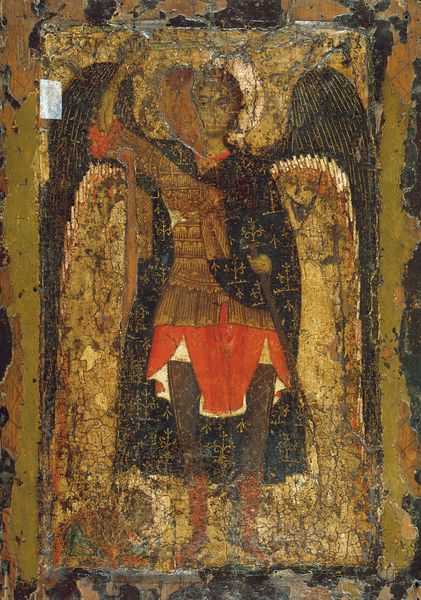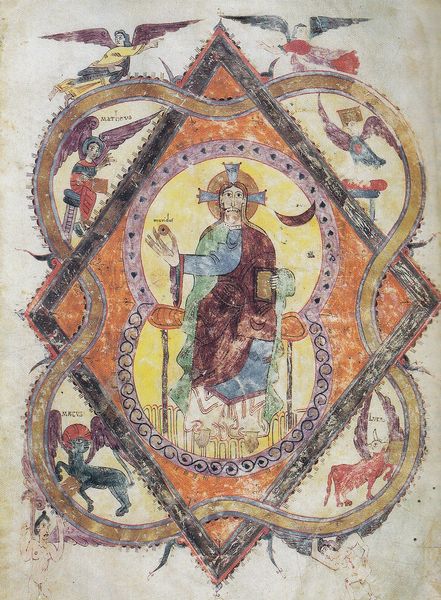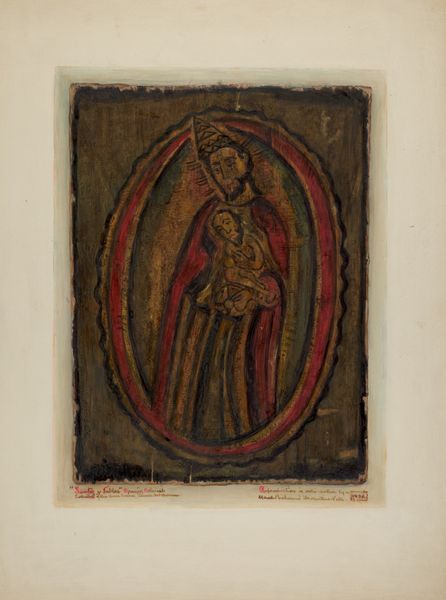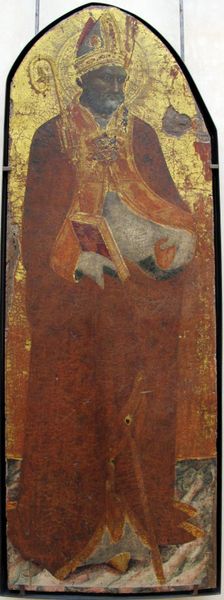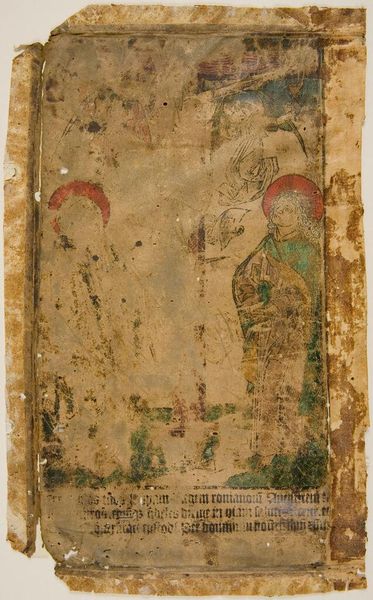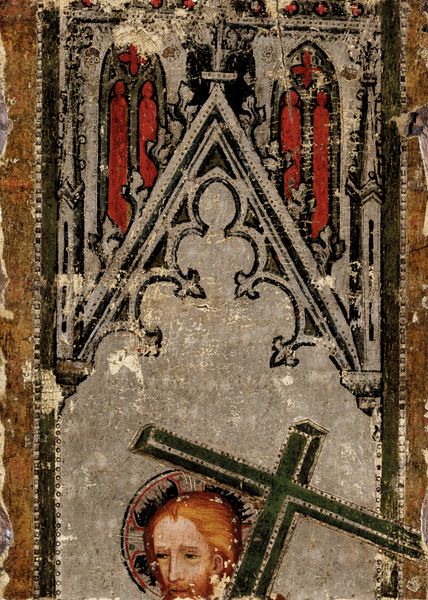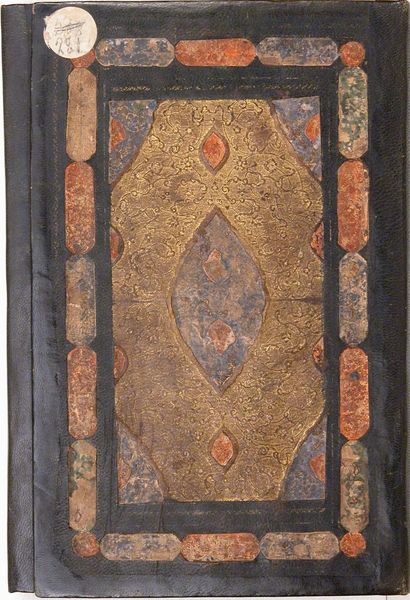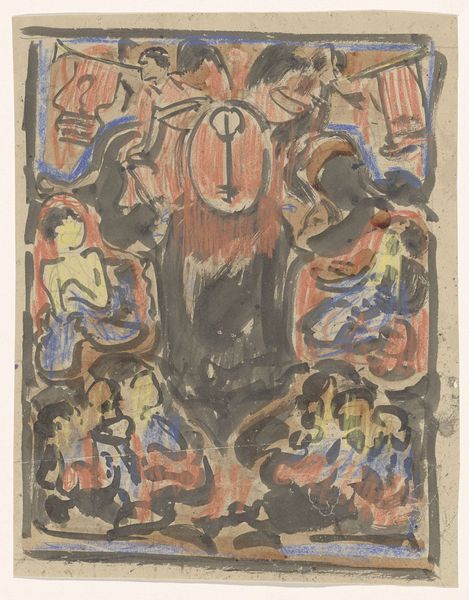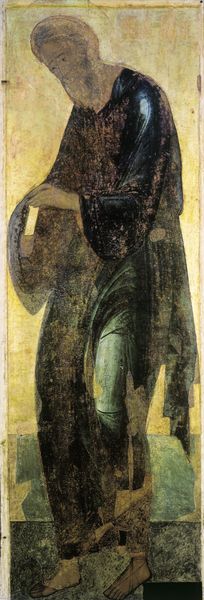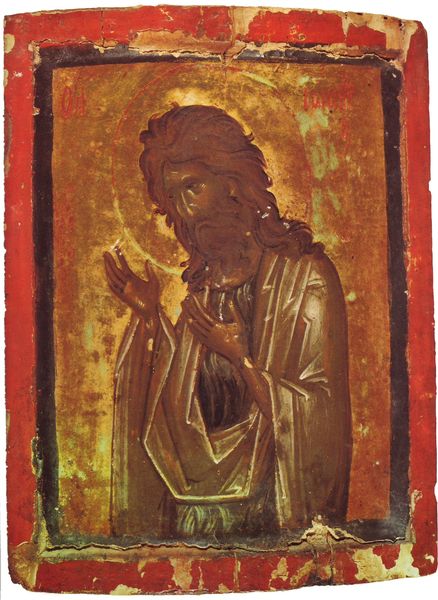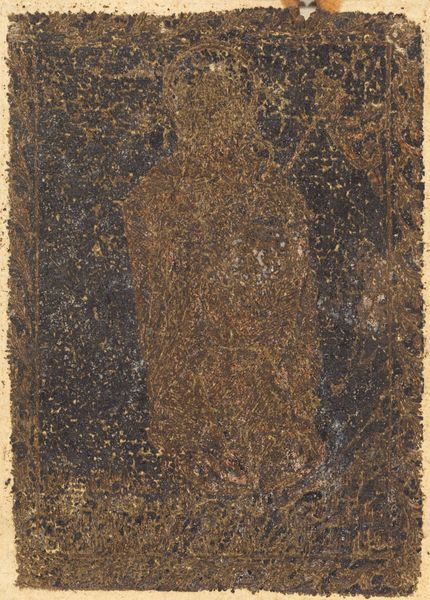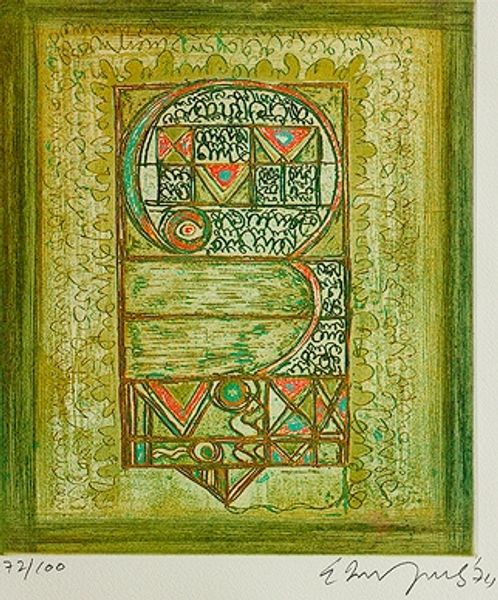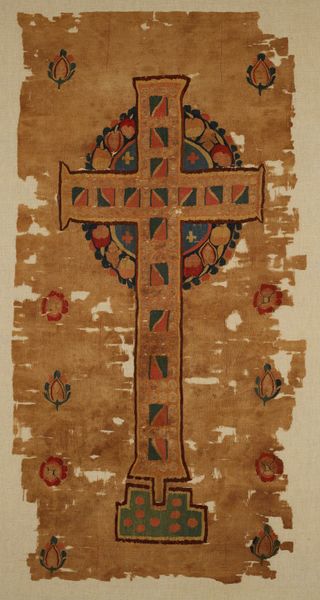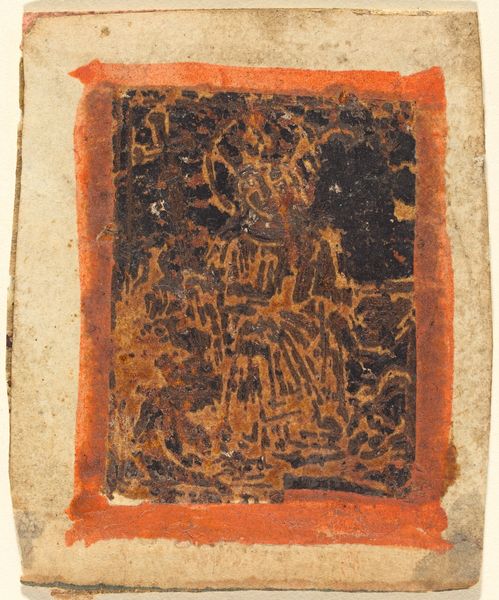
tempera, painting
#
byzantine-art
#
medieval
#
tempera
#
painting
#
figuration
Copyright: Orthodox Icons,Fair Use
Editor: So, here we have *Tetramorph*, a tempera painting from 1350, created in the Byzantine style. The first thing that strikes me is how the figure emerges from all those layers of feathers and gold, creating an almost protective feel. How do you interpret this work in relation to its cultural context? Curator: This piece immediately speaks to the power structures inherent in religious art. The layers you’re seeing – the gold, the feathered wings – they’re not just aesthetic choices; they are markers of divine authority. Consider how the Byzantine era solidified the Church's dominance, influencing everything from governance to personal identity. How do you think this imagery would be read by someone experiencing extreme social or political vulnerability at that time? Editor: I imagine the figure, encased in wings, might be seen as a source of comfort, an unreachable, untouchable figure who remains unaffected by earthly turmoil. Was Byzantine art typically this focused on themes of power and hierarchy? Curator: Power was absolutely central. Byzantine art wasn’t just about depicting biblical scenes. It was actively constructing and reinforcing a very specific worldview. Consider the extensive use of gold leaf. Gold has always been aligned with ideas of value, prosperity and authority. What messages did its omnipresence send about the earthly power of those commissioning and controlling these artworks? And conversely, who did this exclude? Editor: It does feel exclusionary, I can see the divine being visually elevated, seemingly beyond the reach of the everyday person, reinforcing those power structures. So it sounds like it's vital to consider these art pieces within the bigger picture of its contemporary socio-political implications, particularly around control. Curator: Precisely. The painting is beautiful, yes, but to truly understand it, we need to engage with the politics embedded in its creation and reception. That way we can encourage people to understand it for themselves and think critically about its meaning in both the past and present.
Comments
No comments
Be the first to comment and join the conversation on the ultimate creative platform.
